Guide to K-Town, Germany, for military families

Kaiserslautern is in the Rhineland-Palatinate (Rhineland-Pfalz) region of Germany. The Kaiserslautern Military Community (KMC) is the largest U.S. military community outside of the United States. Americans have had difficulty pronouncing Kaiserslautern, so it just goes by the name K-Town. It is actually a city with a population of 100,000, so it offers a lot of things to do. So why not venture outside the BX of Ramstein Airforce Base and visit the sights of K-Town? It is an easy trip from Landstuhl or Ramstein, especially now that Germany is planning on introducing a 49-euro unlimited ticket for all means of transport in Germany. Here is a guide to K-town, Germany, to help you to arrange a visit to the main attractions.
Where is K-Town?
Kaiserslautern lies on the northwestern edge of the Palatinate Forest. The nearest major cities are Mainz, Saarbrücken, and Ludwigshafen.
The following towns around Kaiserslautern have significant military communities: Otterbach, Otterberg, Mehlingen, Enkenbach-Alsenborn, Hochspeyer, Queidersbach, Bann, Kindsbach, Landstuhl, Ramstein-Miesenbach, Rodenbach, Weilerbach.
Things to do in K-town, Germany
Downtown
Kleber Kaserne is just outside central Kaiserslautern. The following attractions are within 3 miles of Kleber, K-town, Germany.
Gartenshau Kaiserslautern
Otherwise known as the Dinosaur-park.
The first thing you will probably notice about Kaiserslautern is how green it is. Besides the immense forest bordering K-Town, it has plenty of urban green areas. The second thing you will probably notice about Kaiserslautern is how gray it is. Even if its climate is mild and sunny compared to other parts of Germany, the overcast and gray days of the winter seem to drag on and on. But when the sun’s out, the K-towners are out and about. The Gartenshau is a popular park for families to chill and children to run around. Located downtown, the first attraction of the Gartenshau is a Lego museum. Right after the entrance, it exhibits models of famous German buildings and well-known attractions, all built from Lego bricks.
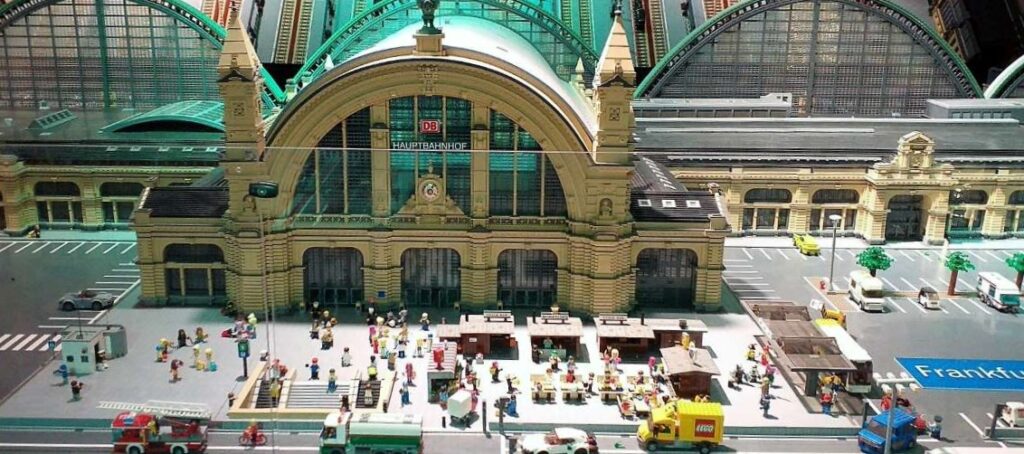
After a short walk on an overpass, you arrive at the outdoor area. The large playground and life-size dinosaur statues provide a lot of entertainment for children. They can also splash around in a creek on warm days. Parents can hang out in the buffet serving German staples like pommes (French fries) and wurst (sausages).
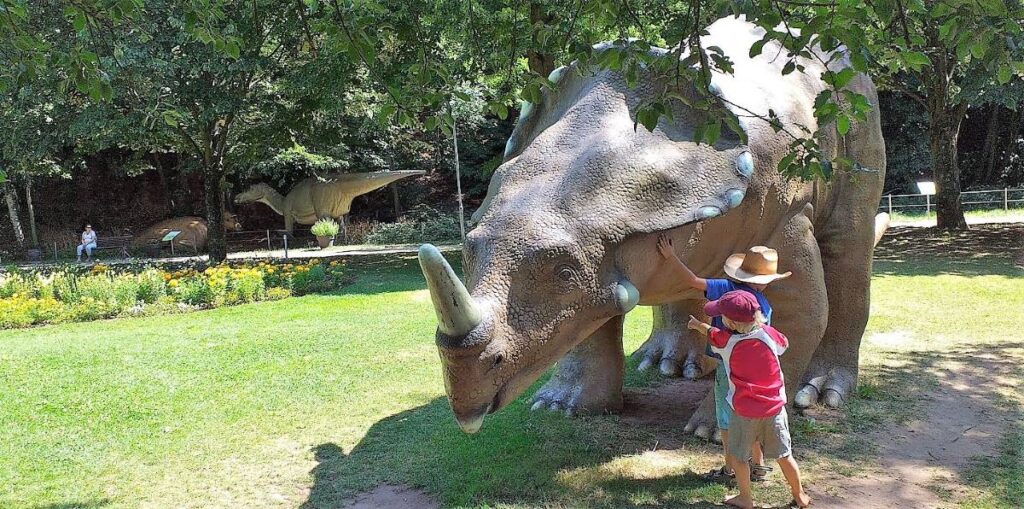
Ticket prices: €12.00 for one adult with children.
Website for further information: here.
Opening hours: the Gartenshau closes for the winter. It is open daily from April 1st to October 31st, 2022 from 9 a.m. to 7 p.m.
Japanese Garden
A kilometer from the Gartenshau, another city park provides quiet and peace in the middle of the city. The Japanese Garden is the largest of its kind in Europe. However, you can easily walk around it in half an hour, and it is authentic with its ponds, waterfalls, and Japanese gate. Children love to feed the koi fish in the pond.
Tickets: 6.50 euros. Children up to 11 are free.
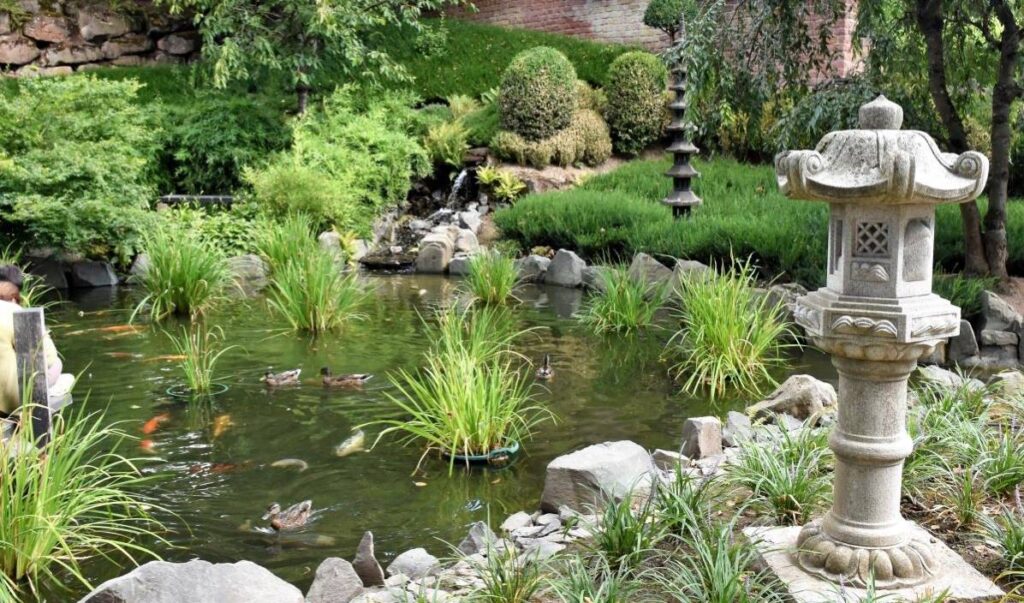
Pfalzgallery
The largest museum in K-town is just a few hundred meters from the Japanese Garden. The focus of the permanent collection is the art of the 19th century. The special exhibitions have included contemporary graphics, photography, and sculptures.
The museum offers art courses for children. The 8-week course involves learning different painting techniques and art history with the help of the exhibits in the museum. It’s my six-year-old son’s favorite thing.
Admission: free for all visitors on every first Saturday of the month.
Art course: 50 euros for 8 occasions.
Further information: please refer to the official website of the museum.
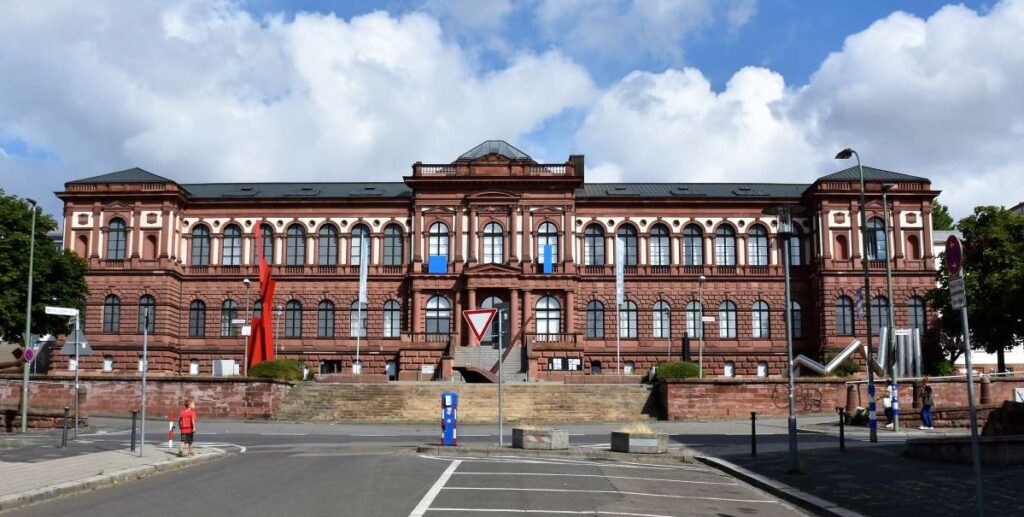
K in Lautern
Another short walk from the museum, and you are in the biggest mall in Kaiserslautern. Let’s face it, most kids (and adults) prefer a mall to an Art Gallery. It has a food court with international restaurants and stores of European fast-fashion and designer brands.
There are playgrounds for children with coin-operated vehicles and a selfie box.
Kaiserpfalz (Barbarossaburg)
Right outside the mall, the palace of Kaiserslautern offers outdoor history lessons. Barbarossaburg, or Kaiserslautern Castle, is a military castle built by Emperor Friedrich Barbarossa in the 12th century. The “Villa Lutra” was the Emperor’s most famous castle in the entire empire.
Only a few foundation areas from this magnificent building are preserved from red sandstone. After excavations, the city has done preservation works on the monuments.
In the 16th century, a Renaissance building, the Casimir Palace, was added to the complex.
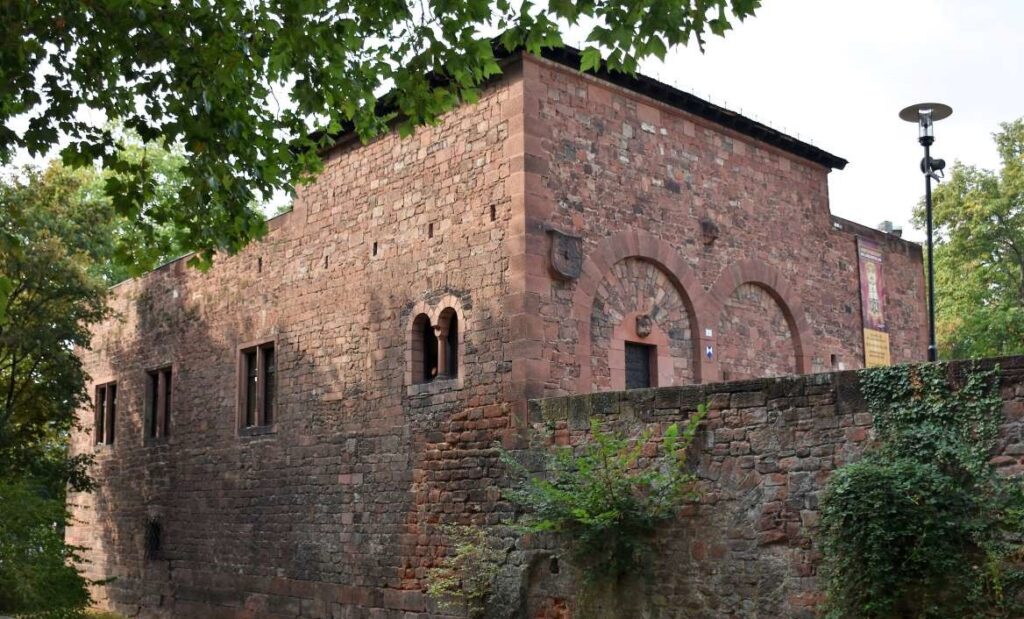
Kaiserbrunnen
Located at the Mainzer Tor, the colossal fountain cannot be overlooked. Kaiserbrunnen tells the history of Kaiserslautern through sandstone structures and bronze sculptures. Emperor Friedrich Barbarossa and King Rudolf von Habsburg are among the statues. The Opel engine and a Pfaff sewing machine represent the modern regional economy. As a heraldic animal of Kaiserslautern, the fish is also among the sculptures, and so is the “Elwedritsche,” a regional mythical creature.
The Kaiserbrunnen is a tourist attraction, but children ususally transform it into a playground. You can sit on a bench and watch your children explore the various sculptures and go with the flow.
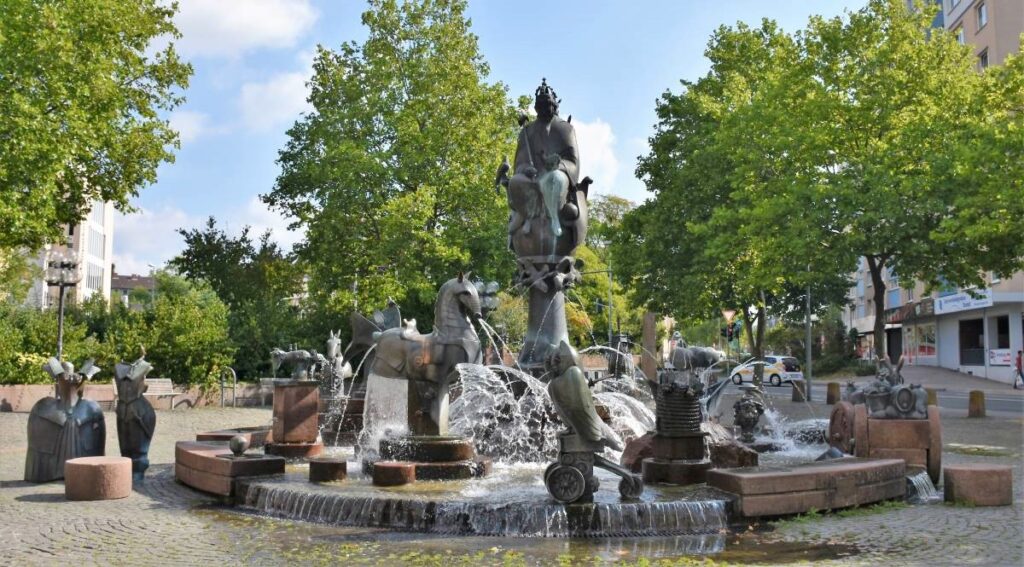
Theodor Zink Museum
Just a couple of steps away from Kaiserbrunnen, you will find the city museum. It might not be too stimulating for young kids, but the permanent exhibitions are free.
It walks you through the history of Kaiserslautern from prehistoric times until today.
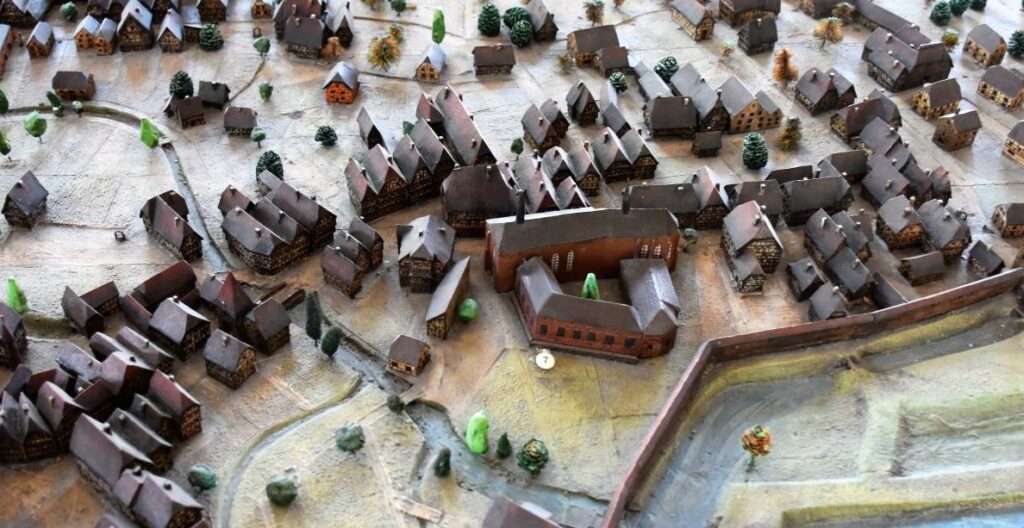
Fritz-Walter Stadium
After spending some time in the K-town area, you have probably noticed a red sign everywhere that says F*CK. That actually stands for 1. FCK, the 1. Fußball-Club Kaiserslautern, the K-town soccer team. Fritz-Walter-Stadion is their home stadium. It was one of the stadia used in the 2006 World Cup. It is named after Fritz Walter, captain of the German national football team that won the 1954 World Cup.
The stadium towers over the downtown area, so it is impossible to miss it. Still, it is near the Hauptbahnhof on Betzenberg Hill.
Everyone expects the 1. FCK to get in the first league, in which case the best Bundesliga teams with superstar players will play in K-town.
I have yet to take my kids there, because they are young, for a football game in a 50,000-seater stadium.
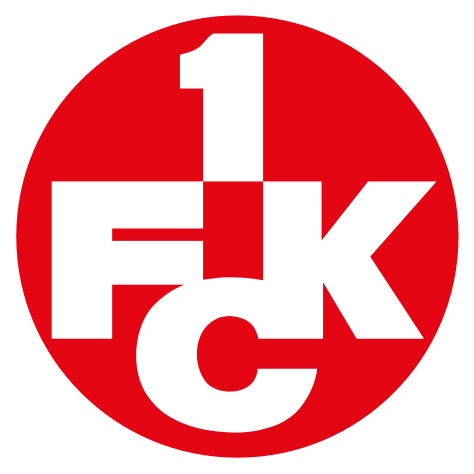
Source: Wikipedia
Close to Vogelweh, K-town, Germany
Kaiserslautern Zoo
A 10-minute drive from Vogelweh, the Kaiserslautern Zoo is open year-round. Don’t expect komodo dragons or elephants: it’s a small zoo with various farm and wild animals. The highlight for my children was the bird show and the playground.
The Zoo is open year-round.
Tickets: 9 euro for adults, 6 euro for children. They only take cash.
Further info about reduced ticket prices: please visit the Zoo’s website.
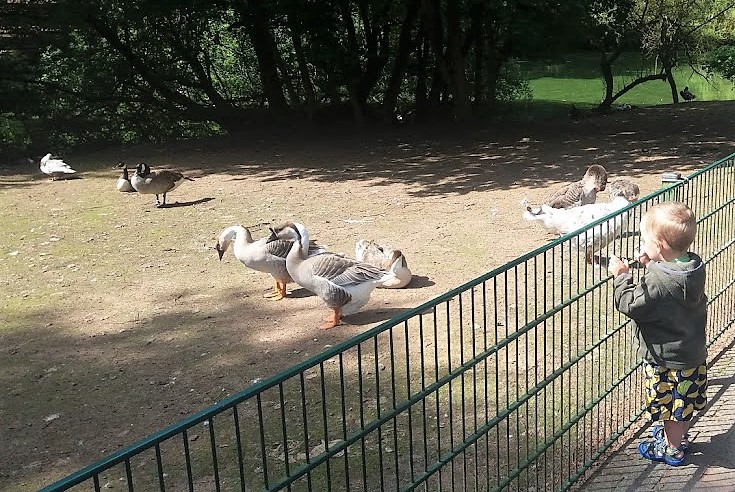
Humberg Tower
The Humbergturm lookout tower offers a magnificent view of the Palatinate Forest and central K-town. The sandstone observation tower is almost 36 m high, with 163 steps leading up to a lofty height. Situated on a mountaintop (Berg means mountain), several trails lead to the tower.
My 6-year-old and I took a 2-kilometer hike from the trailhead in Voltairestrasse, Betzenberg.
How to get there: Bus 102 runs every 30 minutes from the Hauptbahnhof or Stadtmitte (in front of Casimirschloss) and stops at Voltairestrasse. From the bus stop, turn left, walk across the parking lot, and you have arrived at the trailhead.
Even young children can manage this hike.
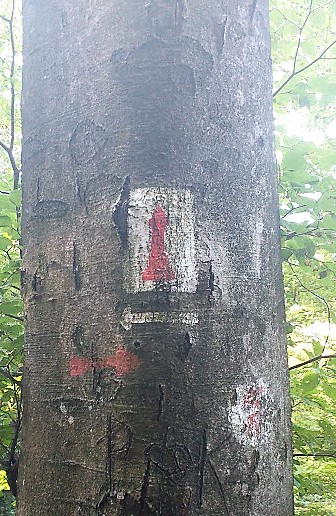
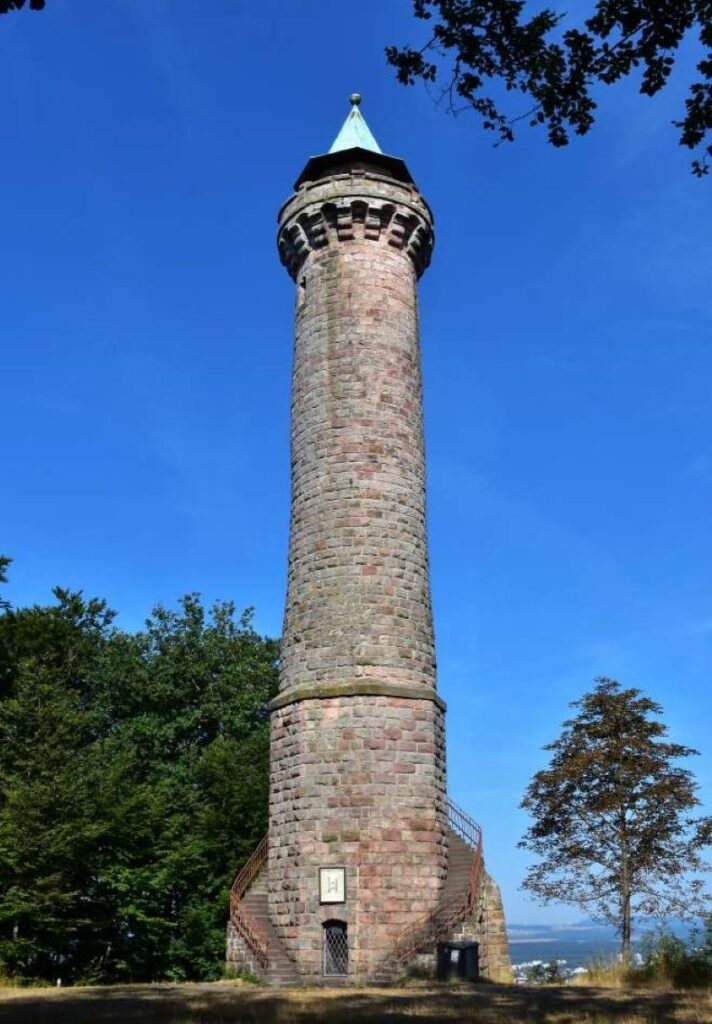
Wildlife Park
The Waldtierpark is home to animals that are or used to be native to Kaiserslautern in the wild. During a walk on the circular route, you can spot wild boars, mouflons, lynxes, deer, rabbits, and bison. Some of these animals are threatened with extinction, which is why the wildlife park has a species protection function.
Cost: it’s free
How to get there: It can be reached on foot from the Betzenberg residential area, from the same bus stop (Voltairestrasse) as the Humbergturm trailhead. If you drive, you can access the facility from the car park on Entersweiler Strasse (opposite the Gasthaus & Biergarten Quack). In this case, you need to tackle a fairly steep climb from the car park.
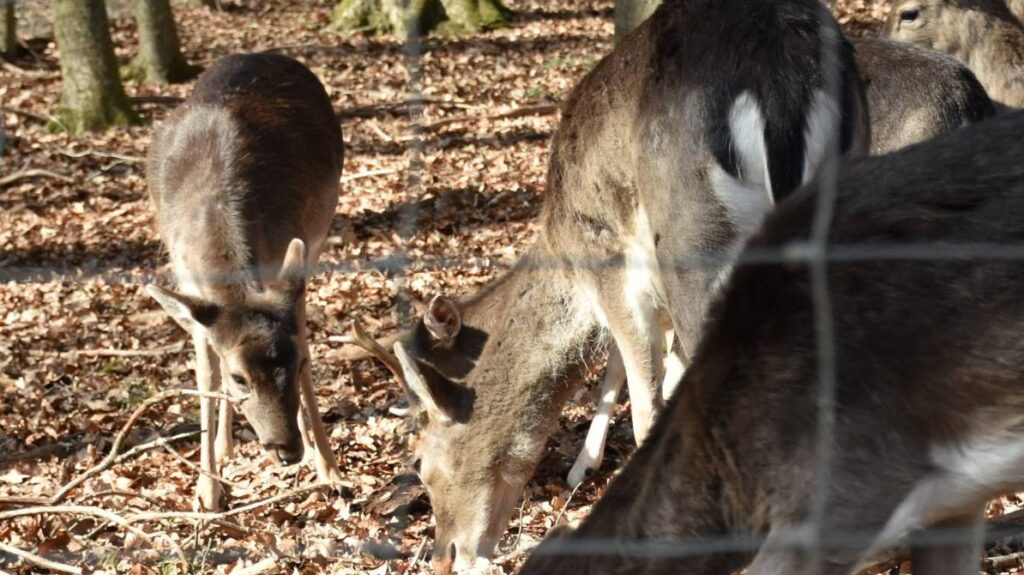
Hohenecken Castle
Burg Hohenecken is the ruin of a spur castle on the Schlossberg Hill above Hohenecken, Western Kaiserslautern. Like other castles in the area, it served the purpose of governing and securing the empire.
It is an easy hike in the Palatinate forest from the main street of Hohenecken.
How to get there: bus 101 runs from Stadtmitte or Vogelweh to Hohenecken, Burg. From there, follow the signs.
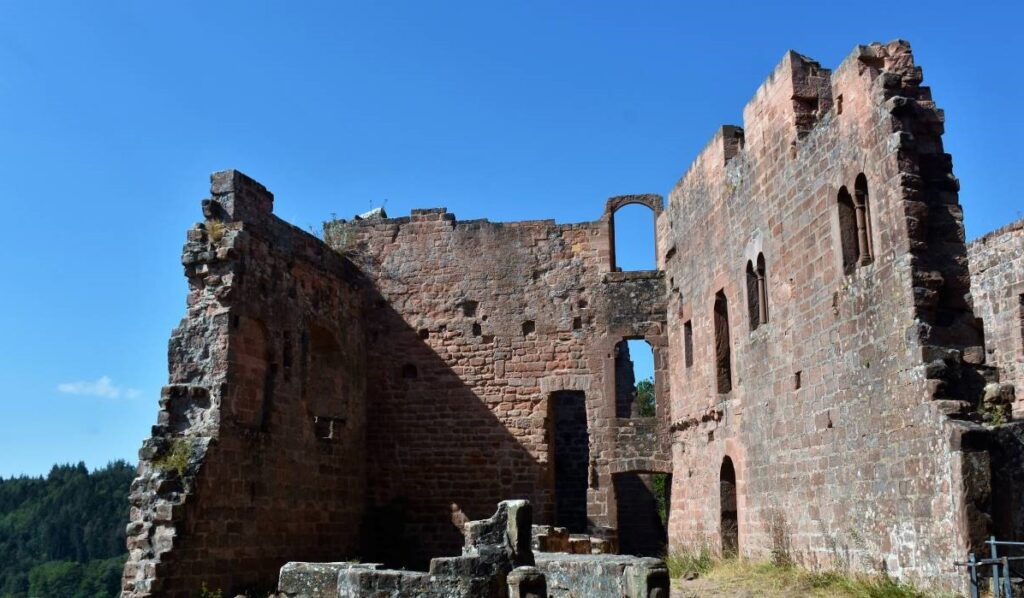
Family-friendly restaurants in K-town, Germany
Vapiano
The popular franchise has a restaurant in K-town, Germany, as well. Kis eats the familiar pasta and pizza dishes willingly. There is also a play area with coloring books and toys for the little ones.
Address: Richard-Wagner-Strasse 1, 67655 Kaiserslautern. It is opposite the K in Lautern mall.
Bremerhof
Located in the heart of Palatinate Forest, the Bremerhof is a cozy restaurant with half-timbered walls and Palzisch wines. However, the shady beer garden makes it very attractive for families with kids during the summer. You can enjoy your Weinschörle (wine spritz) while your children run around the playground. Serving local staples and vegan food, it is popular both among Americans and Germans.
Address: Bremerhof 1, 67663 Kaiserslautern. It is a 10-minute drive from Kleber.
Map of Kaiserslautern
Culture shock in K-Town, Germany
Whether you are a newcomer to Deutschland or about to PCS from here, I bet you have noticed some oddities in K-town, Germany, that pique your interest. You’re surrounded now by strange customs, an unfamiliar language, and peculiarities that make you feel out of place. To put it short, you are in a state of culture shock. For military people, it is— not surprisingly— a permanent state of mind. But if it is any consolation, Germany is not as distant from the US culturally as other countries with a substantial number of US troops —for instance, South Korea.
Here’s a list of culture shocks in Germany, so you can be prepared. They are also great conversation starters for your next retirement or promotion party.
- Ausfahrt: If you have kids, they probably laugh EVERY. SINGLE. TIME when they hear or see the word Ausfahrt. No worries, mine do, too. And it IS funny to call an exit out-fart. I mean, if you think about it.
- Language: The biggest hurdle for ex-pats and military people is usually the language barrier. There is no guarantee that everyone you come across will speak English fluently. Taking language classes before moving or PCSing to Germany is a good idea. This way, you are not entirely lost when you want to order at a restaurant or ask for directions. However, language lessons will only prepare you to use standard German (Hochdeutsch). In the Kaiserslautern area, the Pfalzisch dialect is widely spoken beside the standard, especially in informal situations. No language course can prepare you for that. Still, after spending some time in K-town, Germany, using the most common Palzish expressions will become second nature to you. You will often hear “Alla hop,” which means “alright then/OK then.” The pronunciation is also different from standard German.

- Communication: Germans seem unfriendly and cold at first. But this is because Germans tend to communicate directly. This may cause offense in other cultures, but it is valued here. Locals in K-Town also enjoy their personal space, so it’s best to keep a 6-feet distance (not just during a pandemic) when you are talking to acquaintances. The American’s tendency for small talk is frowned upon here. If you, for instance, complement someone’s outfit, you might come across as creepy—however friendly your intentions are.
- Fish sculptures: you can see them everywhere in Kaiserslautern. The fish is in the coat of arms of K-town, Germany. It can be traced back to the legend of the pike in the Kaiserwoog. Here, in a lake called Kaiserwoog, a colossal pike is said to have been caught, which wore a ring with a Greek inscription. The text noted that Emperor Friedrich II himself put the pike into the lake as the first fish in 1230— 267 years earlier.
- Meaning of the name Kaiserslautern: Another story, the so-called Lutrina legend, tells of the pious woman Lutrina, who fled into the wilderness at the time of the great persecution of Christians and built a dwelling there, which she called Lutra. This is said to have given Lautern its name. Lautern is the river of Kaiserslautern.




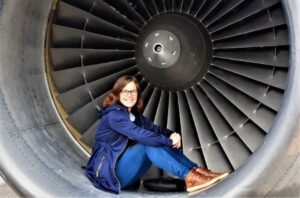
I love that your blog has so much information not just on activities to do but also history. I totally agree that Germans often seem cold but it’s really them just being direct. My ex was German and he was very serious but they just have a different culture than we do. I learned that he always meant well. The Germans that I’ve met are all very kind people.
Love this! I love how much there is to do in Germany! I live in Berlin for almost 4 years! Thanks for all the suggestions.
This is a great guide to K town. There are so many activities. this is great for military people and also regular tourists.
I can certainly see why this town is called K-Town with the long German name. I love the variety in the things to see and do in this area. And something for all family members too. Strange to see how different the Palzish expressions are from traditional German. I am sure we would go searching for fish sculptures and have a whole collection!
I loved your culture shock list! I’m from Austria, which is culturally very similar to Germany. And I remember the first time I was in America and someone complemented my shoes, I just thought that’s the weirdest thing, why does that person care about my shoes 😂. So interesting how different cultures are
This is such a fun list! I have yet to visit Germany but I have friends and family stationed there so I will have to share this with them! Thanks for putting it together!
Thank you for this guide and sharing your travel infos! The Kaiserbrunnen looks wonderful – love this picture!